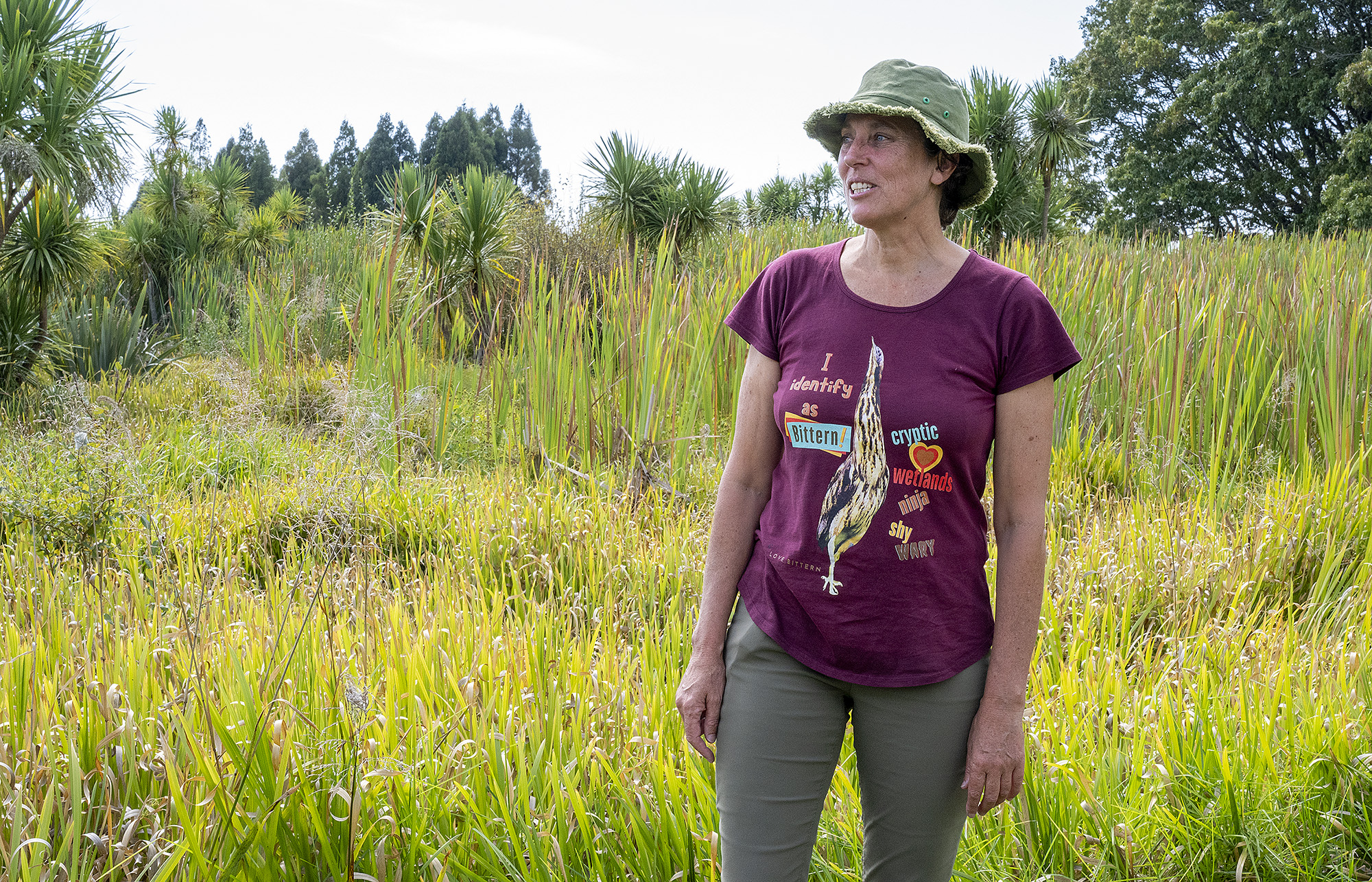Bittern expert visits Eastern Bay

PASSIONATE: Love Bittern Project national co-ordinator Wendy Ambury says the bittern are one step away from extinction. Photos Troy Baker E5320-08
Brianna Stewart
The Australasian bittern could be functionally extinct in the next decade if nothing is done now to reverse its demise, a travelling expert says.
Love Bittern Project national co-ordinator Wendy Ambury was in the Eastern Bay last week looking at local wetlands – the bittern’s habitat – and speaking at various schools and events, all in the name of raising awareness for the bittern.
Together with Eastern Bay of Plenty Forest and Bird, she visited an undisclosed wetland on the Edgecumbe Plains last week to assess what could be done to improve the known bittern habitat.
The total national population of bittern/matuku-herepo is estimated to be fewer than than 1000.
A first of its kind nationwide count last year resulted in an estimate of 500 to 600 birds, but Ms Ambury said she did not think the Matuku Muster reached all corners and pockets of the country.
She said the first most important step in saving the bittern was to raise awareness that it existed at all.
“The most important thing is raising awareness for the species so people know this bird exists and they are one step from extinction.
“Once we have done that and people are locked on to needing to do something about it, we need to assess the situation locally.
“Every community is at a different stage of that journey as to what they can do to help.”

Ms Ambury said bittern could serve as an indicator of wetland health and if community groups such as Forest and Bird knew what their local populations were, they could use bittern to monitor the success of any adjustments they made to improve the ecosystem.
“Bittern are a gold standard for a healthy wetland; they are at the top of the food chain so by looking after them, you are looking after water and plants and insects and fish and other birds.
“Like the kiwi is to our forest, the bittern is to our wetland in terms of icon species.”
She said to assess the health of a wetland all one had to do was listen for the sound of the bittern’s boom.
“And if we don’t have that, then we start looking at those smaller animals, perhaps some indicator species such as the spotless crake or the marsh crake because they will respond a little bit quicker to management.”
If crake were not present, then sights would go to fish and eels, then to insects and herbivores like stepping stones to healing the wetland ecosystem from the bottom up.
“The whole process leads us down the food chain and back up again to the success story of the bittern.
“Having bittern nesting and fledglings successfully leave that nest is bittern utopia.”
Ms Ambury, who came from a farming background herself, said farmers had an opportunity to provide vital bittern foraging grounds.
“When we have our feet on the ground, on the whenua, on the land – whatever we want to call it – we are in touch with what is going on.
“Farmers are our best eyes and our best ears.”
Straightforward changes such as ensuring drains had batters built in would have multiple benefits from decreasing the amount of sediment loss and the likelihood that the bank will slump into the channel, to allowing bittern to forage through shallow waters.
Ms Ambury said nutritional scarcity was contributing to the demise of the bittern and was forcing the birds to forage outside of their natural habitats.
Where previously bittern would eat fish and eels in shaded wetlands at dusk, they could now be found in wide open boggy farmland in broad daylight.
Ensuring drains and waterways were connected to rivers and wetlands would help the birds.
“So, if a young bittern runs out of food here, he can follow a waterway or a drain to another wetland and feed along the way with safe passage.”

She said Otakiri farmer Bridie Virbickas, who was recently quoted in Farmers Weekly as planting trees to create better environments for bittern, was a great example of a farmer doing their bit for the bittern.
“They may just be using it as a foraging ground, but bittern are starving, so we’ll take whatever habitat we can get.
“If it’s not reeds and rushes that can be used for nesting and breeding territory, we desperately need foraging territory – and as much of it as we can get right throughout the farming landscape.
“Farmers know their stuff, they know their land and they are the best people to help us restore some of these habitats and connect it in with the wider network of waterways.”
Following her visit to Whakatāne on Wednesday, and a speech given at the EBOP Forest and Bird AGM that night, Ms Ambury continued down the East Coast where she visited several schools as far away as Potaka.